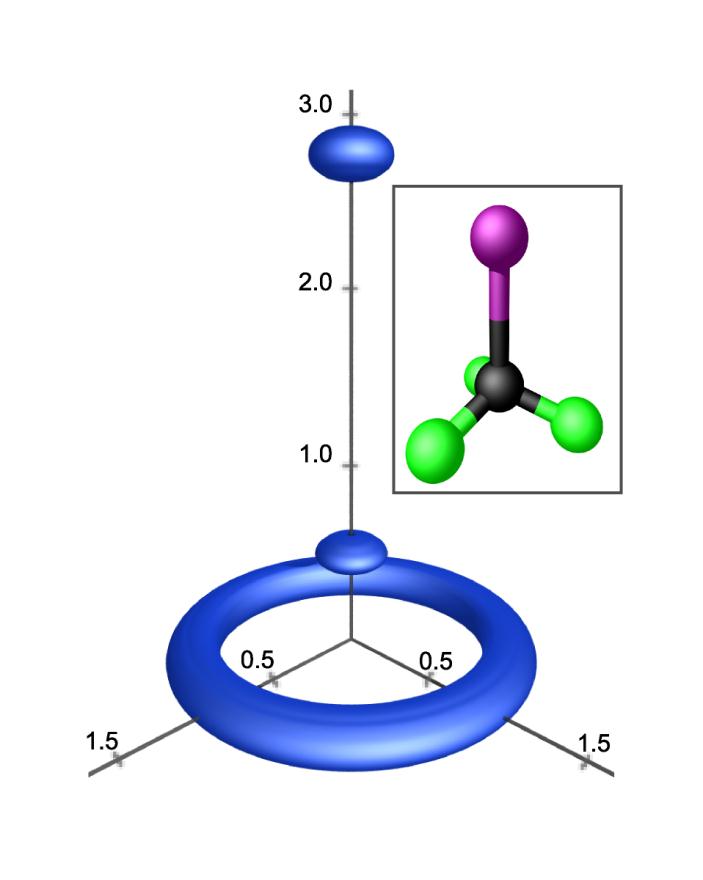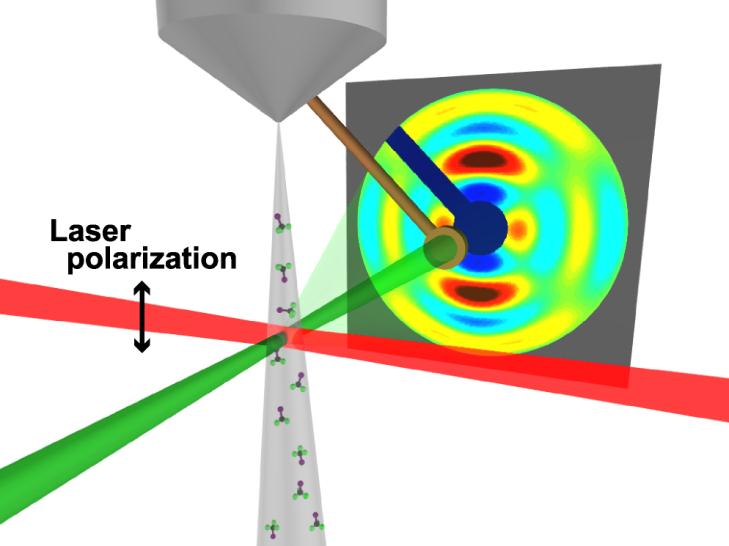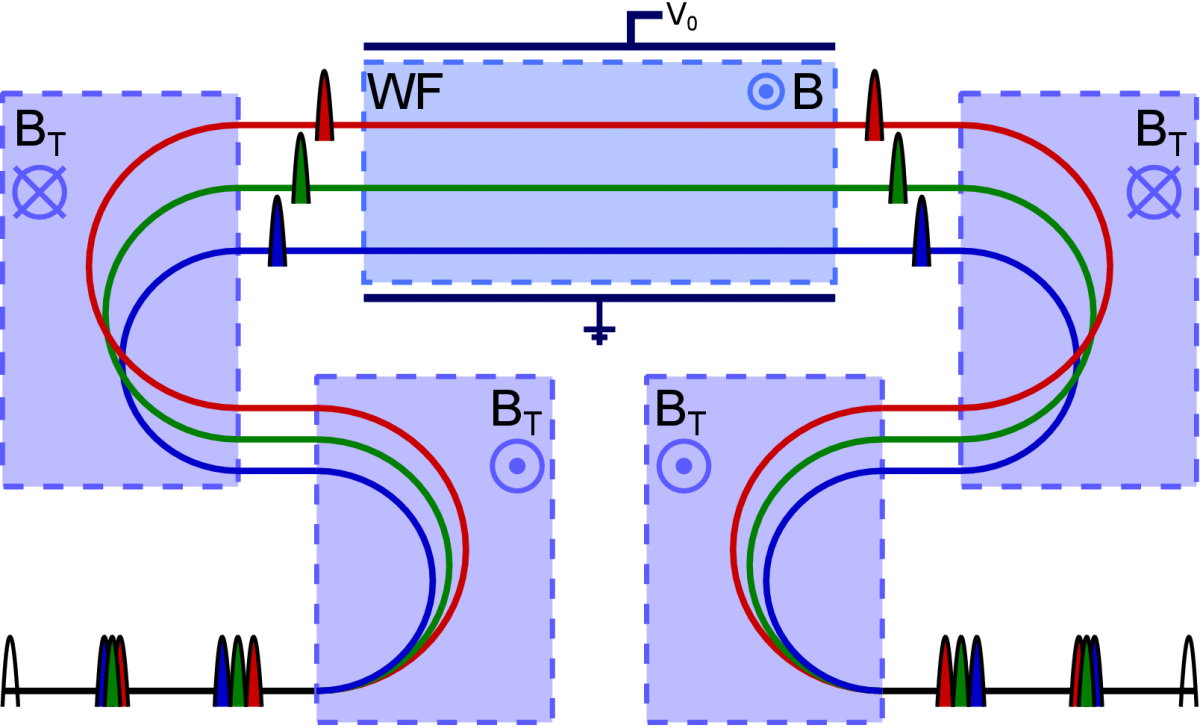Current Research
3D Imaging of Isolated Molecules
The goal of the project is to measure the 3D structure of isolated molecules. The random orientation of molecules in the gas phase reduces the amount of information contained in diffraction patterns, and thus effectively limits structure determination to simple molecules with only a few atoms. However, if the molecules are aligned, much more information becomes accessible, and the 3D structure can in principle be retrieved. We use a femtosecond laser pulse to impulsively align the molecules. With this method the molecules reach a maximum alignment a few picoseconds after interacting with the laser pulse, so the structure can be probed by a short electron pulse in a field-free environment. We have recently succeeded in retrieving the 3D structure of a symmetric top molecule and are now planning experiments with more complex molecules. This method could be utilized for elucidating the structure of complex molecules, for example biomolecules that cannot be crystallized.

Ultrafast Imaging of conformational changes and bond breaking in molecules
We use femtosecond electron pulses to observe ultrafast dynamics in real space and time in previously inaccessible systems. Electron diffraction can be used to measure the molecular structure, i.e. the position of all the atoms in the molecule. Adding time resolution will allow us to map the position of all the atoms in the molecule as a function of time during ultrafast structural changes. We plan to apply this method to investigate intermediate states in photoreactions, for example the isomerization reaction in retinal. This reaction happens on femtosecond time scales, and is the first step in the vision process.

Attosecond Electron Pulses and Imaging of Electron Motion in Atoms and Molecules
While femtosecond pulses are sufficient to image the fastest changes in molecular structure, changes in the electronic orbitals can happen on attosecond time scales. With attosecond electron pulses, it would be possible to temporally and spatially map photo-induced changes in electron orbitals, in a sense imaging the motion of the electrons. We are exploring different ideas on how to deliver attosecond electron pulses on a target, and have recently completed a theoretical paper on dispersion compensator for attosecond electron pulses (in collaboration with Herman Batelaan's group). This could be used to deliver attosecond electron pulses generated by tip or other source on an atomic or molecular target.

Previous Research
Ultrafast Plasma Physics
Laser induced plasmas have found many applications, such as the generation of X-rays and high harmonics and particle acceleration, but their temporal evolution is still not fully understood. The evolving plasma fields can be imaged using short electron pulses, revealing information not available by other methods. This method has the potential for very high temporal and spatial resolution imaging, which could reveal the ionization dynamics inside of an intense laser focus.

Femtosecond Nonlinear Optics
The high intensity of femtosecond laser pulses results in strongly nonlinear behavior that can be used for many applications, such as wavelength conversion, switching, compression and amplification of the light pulses. However, the high intensity can also ionize a material and create a plasma, which can result in permanent damage. We seek to understand and control the light propagation to provide useful functionalities while avoiding undesirable effects.

